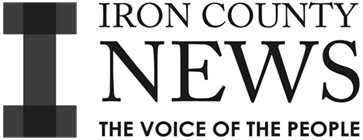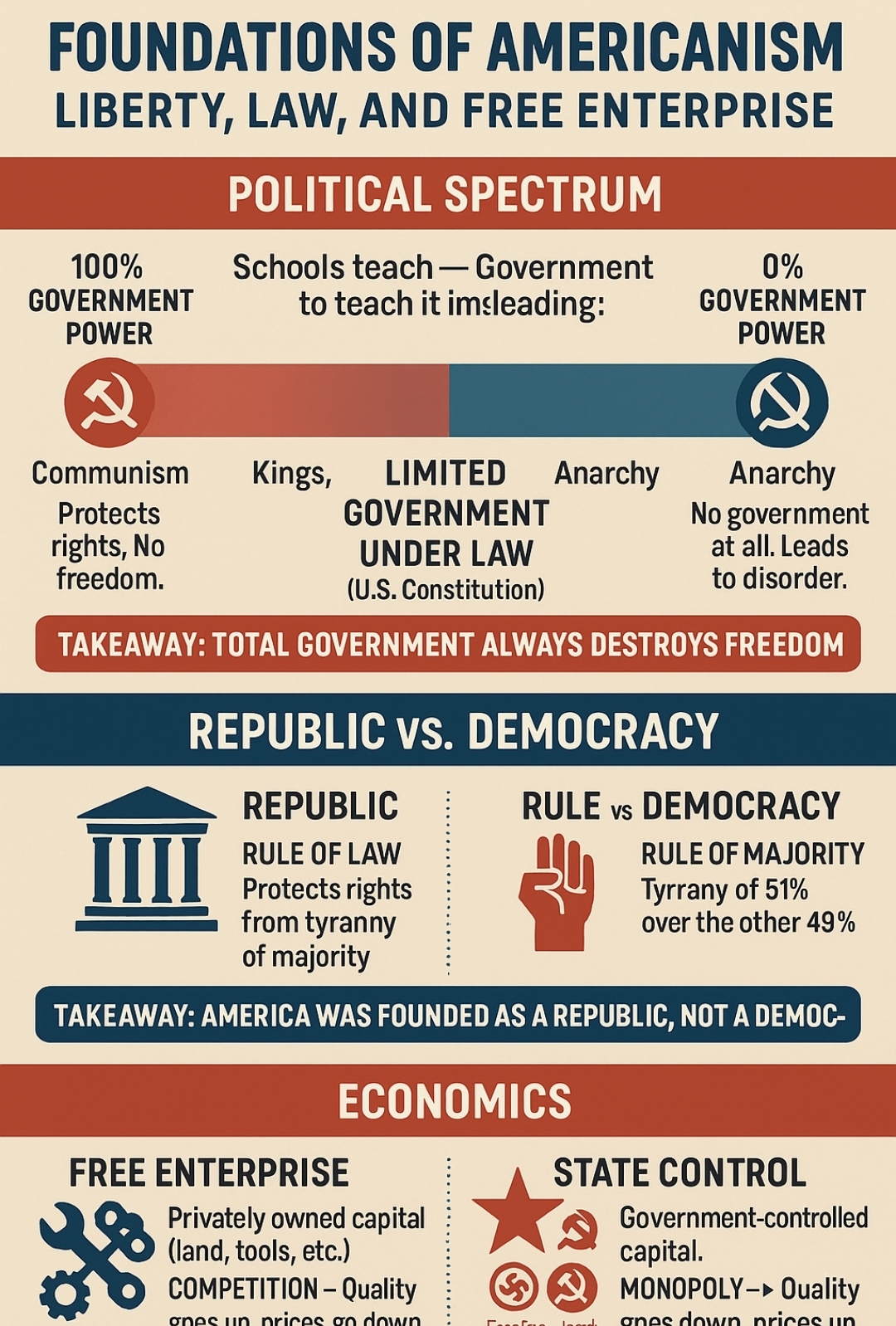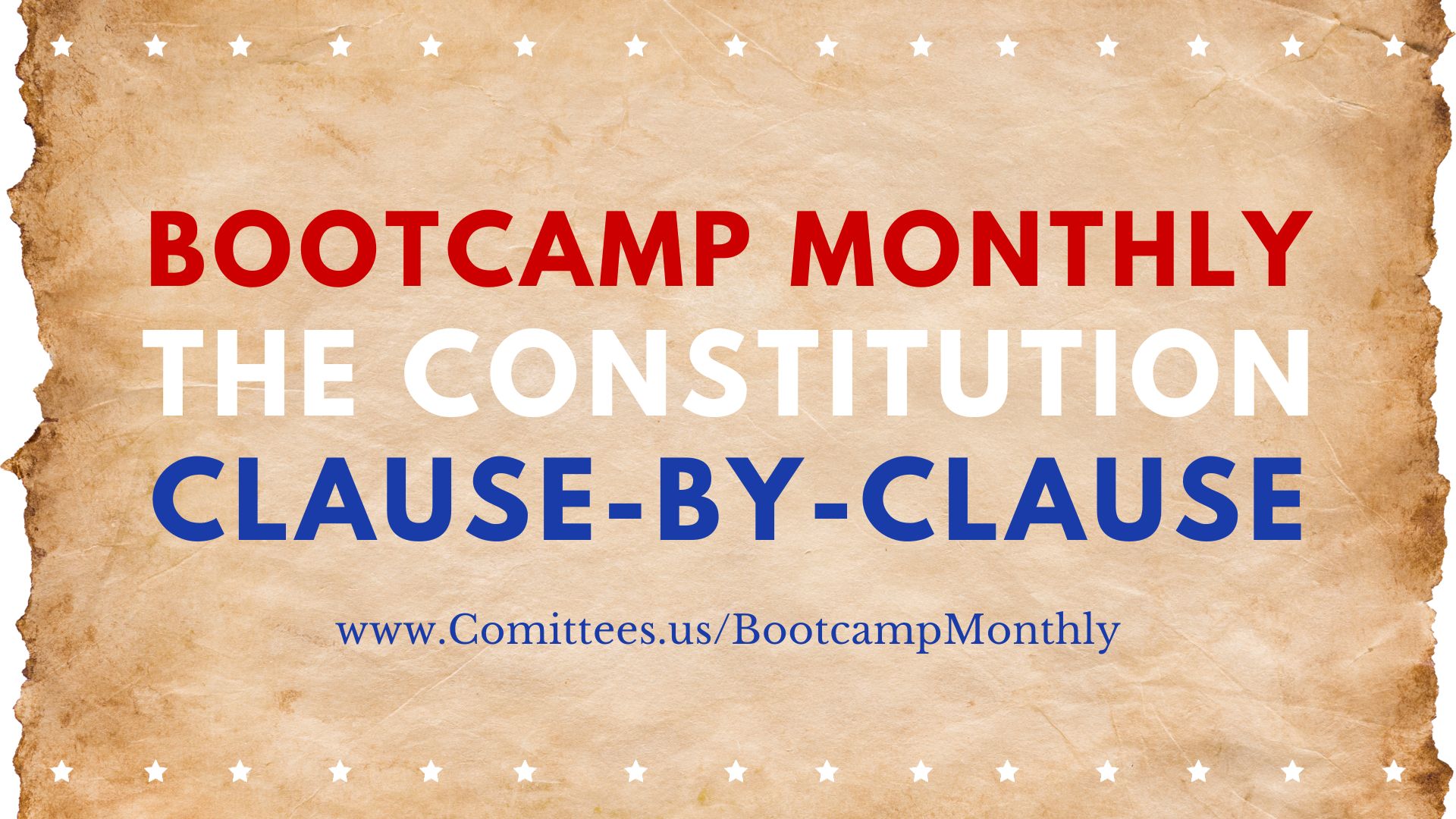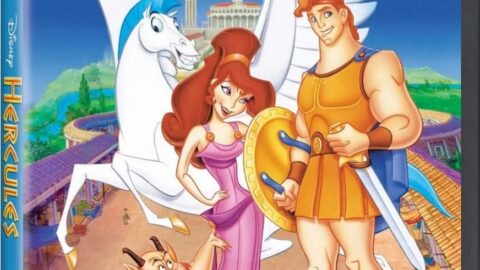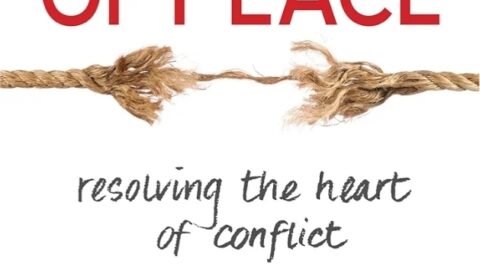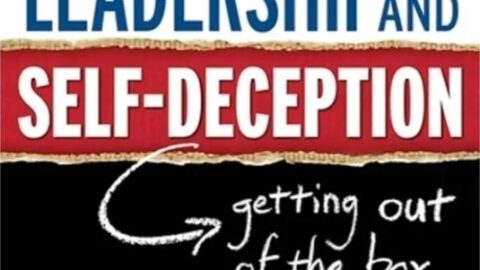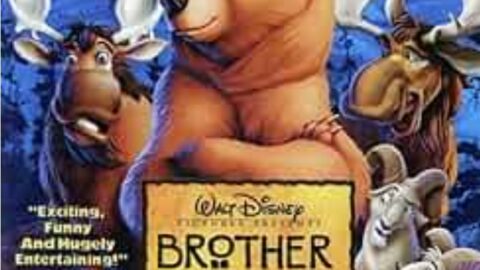The John Birch Society’s Overview of America presents a simple but profound truth: America’s greatness wasn’t an accident of geography or wealth—it was the product of ideas, moral discipline, and limited government. To help overcome the indoctrination of public schooling and the confusion spread by media and politics, here is a point-by-point article that lays out the film’s core insights and what they mean for us today.
America’s Birth and Heritage
- 1776: America was founded on liberty under law, rooted in a religious and moral heritage.
- The nation thrived not because of resources or ethnicity, but because of freedom restrained by morality.
- Early Americans valued work, initiative, and self-discipline.
Takeaway: Freedom works when paired with responsibility and virtue.
The Refuge of the World
- Millions fled oppression to America, not for handouts, but for opportunity.
- America’s example gave hope even to those who never came.
Takeaway: The U.S. became a beacon of liberty because it allowed individuals to keep what they earned.
Prosperity With a Warning
- Modern America looks wealthy, but many freedoms have quietly diminished.
- Problems like heavy taxation, regulation, and social decay come from forgetting first principles.
Takeaway: Material prosperity without liberty is short-lived.
The Declaration of Independence (Philosophical Base)
- Rights are God-given, not granted by government.
- Government’s sole purpose is to secure rights, not redistribute wealth or engineer equality.
- Government is a negative force: it should restrain evil, not control daily life.
Takeaway: Any government that assumes it can “provide” rights has already overstepped.
The Constitution: Chains on Government
- Written in 1787 to correct the weaknesses of the Articles of Confederation.
- Designed to govern the government, not the people.
- Strictly limited federal powers; states remained sovereign.
- Ratified with the Bill of Rights, better understood as a Bill of Limitations on Government.
Takeaway: The Constitution is a cage for government power, not a permission slip for government growth.
Republic vs. Democracy
Republic = Rule of Law
- A Republic restrains government by written law.
- Individual rights are not subject to majority vote — they come from God, not government.
- Example from the transcript: The Bill of Rights didn’t give rights; it tied the hands of government — “Congress shall not…”
- In a Republic, the sheriff stops the lynch mob and ensures the accused gets a trial by jury, not mob vengeance.
Democracy = Rule of Majority
- Democracy means majority rule with no restraints.
- If 51% vote to seize your property or silence your speech, they can — because “the people decided.”
- Example from the transcript: In a democracy, the lynch mob votes 35–1 to hang the gunman. The vote alone is “enough.”
- This is why the Founders despised democracy.
- James Madison (Federalist #10): “Democracies have ever been spectacles of turbulence and contention…”
- John Adams: “Democracy never lasts long. It soon wastes, exhausts, and murders itself.”
- Alexander Hamilton: “Real liberty is never found in despotism or in the extremes of democracy.”
Historical Proof
- Athens (Greek democracy): Collapse into chaos and mob violence.
- Rome: Began as a Republic, fell into “bread and circuses” democracy → mob demanded more benefits → Caesar’s oligarchy and empire.
- Modern Example: Weimar Germany — unstable democracy, mobs in the streets → collapse into Hitler’s fascist regime.
Why the Founders Chose a Republic
- In 1787, after the Constitutional Convention, a woman asked Benjamin Franklin: “What have you given us?”
- Franklin replied: “A Republic, if you can keep it.”
- They had studied history. They knew democracies collapse into mob rule, then tyranny.
- They deliberately avoided the word “democracy.” (It appears in no U.S. founding document — not the Declaration, not the Constitution, not any of the 50 state constitutions.)
The Takeaway Today
- America was founded as a Republic — where law, morality, and God-given rights limit both government and majority.
- Calling America a “democracy” isn’t just a harmless word shift — it changes how people think about power.
- If “democracy” is the standard, then mob rule is legitimate.
- If “Republic” is the standard, then the Constitution and individual rights are supreme.
Words matter because systems matter. Lose the Republic, and “democracy” becomes the mob-rule bridge to tyranny.
Political Spectrum Clarified
The Popular but False Spectrum
- Taught in schools and media:
- Far Left = Communism.
- Far Right = Fascism, Nazism, Dictatorships.
- Middle = Moderates or “centrists.”
- Problem: This implies communists and fascists are opposites, when in reality both systems rely on total government power.
The True Spectrum
- Far Left = 100% government control.
- Communism, socialism, Nazism, fascism, monarchs, dictators, oligarchies.
- All mean the state controls your life — production, wages, speech, property, and even morality.
- Far Right = 0% government.
- Anarchy: no law, no order, no protection of rights. Always temporary, collapsing into oligarchy when chaos drives people to beg rulers for order.
- Center = Republic under law.
- Limited government restrained by a written Constitution.
- The only system where freedom flourishes because government’s role is to protect rights, not control lives.
Examples:
- Nazism (National Socialism):
- Hitler’s regime “owned” some industries like Volkswagen outright, but for the rest he simply dictated: what to produce, how much, who to hire, what to charge.
- Owners still “held the title,” but the government controlled everything.
- Fascism (Mussolini’s Italy):
- Businesses stayed “private,” but the state controlled production, labor, prices, and profits through regulation and coercion.
- Shopkeepers handled maintenance and payroll, but Mussolini’s bureaucrats gave the orders.
- Communism (Soviet Union, China, Cuba):
- State claimed open ownership of all capital and production.
- In practice, functioned the same as fascism and Nazism: total control of lives and resources, just without the illusion of private ownership.
Why the Spectrum Matters
- The false spectrum confuses the young into believing the “extremes” of left and right are equally dangerous.
- In reality, both communism and fascism = all power to the state, no power to the people.
- The only true opposite of tyranny is limited government — not mob democracy, not anarchy, not state control.
Takeaway
America’s founders built the Republic precisely to stop that slide into oligarchy by tying the hands of government with law.
Labels shift, but total government always crushes liberty.
Call it communism, socialism, fascism, Nazism, monarchy, dictatorship, or “state capitalism” — the result is the same:
High taxes, endless regulation, no private property, and citizens treated as subjects.
The True Spectrum of Government Power
The Overview of America dismantles the misleading “left vs. right” teaching in schools and replaces it with the only spectrum that actually matters: how much power government holds over the individual.
Far Left = 100% Government Power
When government has all power, individuals have none. Freedom is extinguished.
- Communism – The state openly owns and controls all capital and production.
- Examples: The Soviet Union seized land, factories, and farms; Mao’s China collectivized agriculture, leading to famine that killed tens of millions.
- Transcript: “The Communist Manifesto explicitly preaches the destruction of private property.”
- Socialism – The state takes ownership or control of major industries, then extends its power everywhere else.
- Examples: Britain’s nationalized healthcare and utilities after WWII; Venezuela’s seizure of oil industries.
- Transcript: Socialists “gain control over virtually everything else” by owning transportation, communication, and utilities.
- Fascism – Businesses remain “private” on paper but are tightly controlled by the state.
- Example: Mussolini’s Italy dictated what to produce, how much, wages, raw material sourcing, even prices. Owners kept the title but lost freedom.
- Transcript: “The fascist system is more efficient because those living under it think they still own their businesses.”
- Nazism – A form of fascism with an added racial ideology.
- Example: Hitler’s regime took direct ownership of Volkswagen while controlling other corporations the same way Mussolini did.
- Monarchs/Dictators – Kings and emperors concentrated all authority in themselves.
- Example: Louis XIV of France: “I am the state.”
Result: Whether labeled communism, socialism, fascism, Nazism, or monarchy, the outcome is the same: oligarchy — rule by a few elites, crushing individual freedom.
Far Right = 0% Government Power (Anarchy)
When there is no government, there is no protection for life, liberty, or property.
- Anarchy looks like perfect freedom at first. But without law, every man must guard his family and possessions around the clock.
- Transcript: “Everyone must be armed and movement is severely restricted because property has to be protected at all times.”
- Historical examples:
- Russia 1917 – Warlords and mobs battled in the chaos after the czar fell, paving the way for Lenin’s Bolsheviks to seize absolute power.
- Weimar Germany (1920s–30s) – Street violence, riots, and instability allowed Hitler’s Brownshirts to terrorize the public and deliver him to power.
Result: Anarchy is always a temporary condition. People beg for “order,” and tyrants step in to provide it.
Center = Limited Government Under Law (The U.S. Constitution)
The only sustainable system of freedom.
- The Republic – The Constitution was designed to govern the government, not the people.
- Powers strictly limited: defense, foreign relations, interstate disputes, protection of rights.
- Everything else left to the states and the people.
- Competition Among States – By limiting federal power, states competed to offer the best conditions: low taxes, fewer controls, greater opportunity.
- Transcript: “That spirit of competition produced excellence, as honest competition always does.”
- The Bill of Rights – Further tied the hands of the federal government.
- Example: “Congress shall make no law” restricting speech, religion, the press, assembly, or the right to bear arms.
- Transcript reminder: The Bill of Rights didn’t grant rights—it forbade government from infringing them.
- Founders’ Design – A Republic, not a democracy.
- Transcript: Benjamin Franklin: “A Republic, if you can keep it.”
- Madison: Democracies are “spectacles of turbulence and contention.”
Result: Maximum liberty + ordered stability. People were free to work, worship, and build without fear of the state seizing the fruits of their labor.
Takeaway
- Answer for America: Return to less government, more responsibility, and—by God’s grace—a better world.
- False Spectrum: Teaches us that Nazis and communists are opposites, hiding the fact that both are totalitarian.
- True Spectrum: The real issue is the degree of government power.
- Lesson of History: Nations that abandon limited government slide leftward toward oligarchy.
Lessons From History
- Rome: Began as a republic (laws restraining government). Prosperous and stable. Gradually slid leftward into democracy (majority mob rule), then into Caesar’s oligarchy (total government).
- Greece: Early city-state democracies collapsed under mob rule and internal chaos. Without fixed law, they turned into tyrannies.
- Modern Examples:
- Soviet Union: Full far-left communism → economic collapse.
- Nazi Germany: Fascist/socialist control → total war, genocide, collapse.
- Venezuela: Once wealthy, slid leftward into socialist control → shortages, collapse of freedoms.
The American Choice
Benjamin Franklin warned: “A Republic, if you can keep it.”
- If Americans forget the Constitution’s limits, we drift leftward toward oligarchy (rule by elites, whether corporate, bureaucratic, or political).
- Democracy (mob rule) and anarchy (lawless chaos) are both stepping stones toward tyranny.
- The only stable place is the center: a Republic where government is chained by law, morality, and citizen vigilance.
Takeaway:
The fight is not between “left vs. right” as the media portrays, but between freedom vs. control. Every nation that forgets this drifts into oligarchy—an elite few ruling with total power. America’s survival depends on holding the center ground: a Republic under law, morality, and limited government.
Lessons From History: Greece & Rome
- Greek democracies collapsed under excesses and mob rule.
- Rome built a republic based on fixed law, prospered, then collapsed when citizens traded liberty for “bread and circuses.”
- Lesson: Prosperity makes people complacent; complacency invites tyranny.
Takeaway: A republic requires vigilance and virtue.
Forms of Government Simplified
- Monarchy/Dictatorship → really ruled by a group (oligarchy).
- Oligarchy → most common form in history.
- Anarchy → temporary chaos that invites tyrants.
- Democracy → unstable, leads to mob rule.
- Republic → government bound by law, protecting liberty.
Takeaway: Only the Republic balances freedom with order.
Economics: Free Enterprise vs. State Control
At its core, economics comes down to who controls capital—the means of production such as tools, land, machines, and businesses.
Capital Defined
- Capital = the means of production.
- Example (Transcript): A castaway on an island sharpens a stick into a spear. The spear itself is capital—it’s not food, but it enables him to catch food.
- Capital can be simple tools, or entire industries. What matters is who controls it.
Free Enterprise (Competitive Capitalism)
- Ownership: Capital is owned and controlled privately.
- System: Buyers and sellers freely transact; government’s role is only to punish fraud, theft, or coercion.
- Result: Innovation, efficiency, prosperity.
- Transcript: “Competition results in excellence, as it always has.”
- Example: Early America—small farms, independent shops, and thriving local economies where hard work and thrift were rewarded.
State-Controlled Capitalism
When government or an elite controls capital, individuals lose freedom. The transcript shows several variations:
- Fascism (Mussolini’s Italy):
- Businesses remained “private” on paper, but the government dictated what to produce, how much, what price to charge, and even who to hire.
- Owners had the title, but no real control.
- Nazism (National Socialism):
- Hitler seized some industries outright (e.g., Volkswagen) but otherwise copied Mussolini’s model of state direction.
- Transcript: “He simply controlled them just as Mussolini had controlled businesses in Italy.”
- Socialism:
- Government directly owned and managed “key industries” like transportation, communications, and utilities.
- By controlling these choke points, socialists could steer the entire economy.
- Communism:
- The most extreme version—all property owned and controlled by the state.
- Transcript: “Communism is more honest than fascism because all of the capital is owned and controlled by the state.”
Competition vs. Monopoly
- Free Market Competition:
- Multiple producers compete → lower prices, higher quality.
- Customers benefit from innovation and choice.
- Example: Competing colonies and states in early America, each striving to offer a better environment for families and businesses.
- State-Controlled Monopoly:
- With no competition, quality declines and prices rise.
- Why improve if there’s no alternative for customers?
- Example: Soviet Union—long breadlines, poor quality goods, shortages of basic necessities, while the elite lived in luxury.
Private Property = Freedom
- True ownership includes four rights:
- Title (legal recognition).
- Control (decisions over use).
- Use (the right to benefit from it).
- Disposal (ability to sell or pass it on).
- In socialism/fascism, these rights are stripped away. You may keep “title” but lose real control.
- Takeaway: Freedom and property go hand-in-hand. If you cannot control your property, you cannot control your life.
The Battle of Economics
- It’s not “capitalism vs. communism” as schools teach—it’s free enterprise vs. state control.
- The real question: Does the individual control the fruits of his labor, or does the state?
Takeaway
- Free enterprise rewards thrift, skill, and initiative.
- State control rewards loyalty to the system and punishes independence.
- History’s Lesson: Wherever government monopolizes capital, liberty dies and poverty follows. Wherever individuals control capital, freedom and prosperity thrive.
Morality and Religion as the Foundation
- Freedom requires virtue.
- Founders:
- John Adams: “Our Constitution was made only for a moral and religious people.”
- Washington: “National morality cannot prevail without religious principle.”
- Franklin: “Only a virtuous people are capable of freedom.”
- Without morality, freedom decays into chaos, which invites tyranny.
Takeaway: Morality is not optional for liberty—it is its backbone.
The Fork in the Road
- America drifts toward oligarchy by trading freedom for security.
- The alternative is to return to Americanism: less government, more responsibility, faith in God, and free markets.
- As Franklin warned: “A Republic, if you can keep it.”
Takeaway: The Republic survives only if citizens re-embrace their duty: to think clearly, live morally, and resist the creep of total government.
Conclusion: From Indoctrination to Clarity
Public schools often left us with slogans: “America is a democracy,” “Government provides rights,” “Freedom means doing whatever you want.” These are half-truths that obscure reality.
The truth is simpler and more demanding:
- Rights come from God, not government.
- Government’s role is limited: protect, not provide.
- Freedom requires personal morality, responsibility, and vigilance.
- Republic, not democracy, is America’s system.
When these truths are taught and lived, America thrives. When they are forgotten, history guarantees decline.
